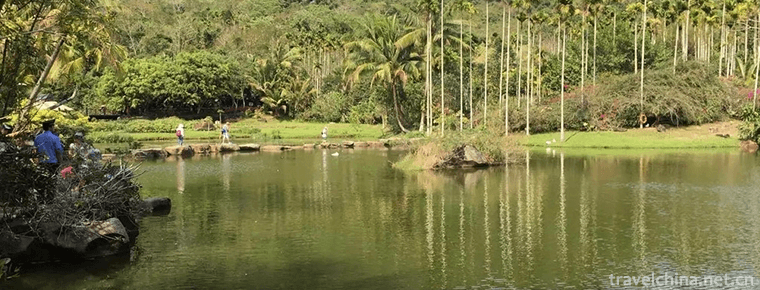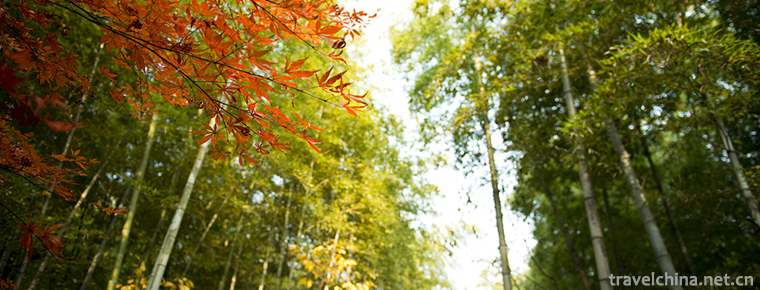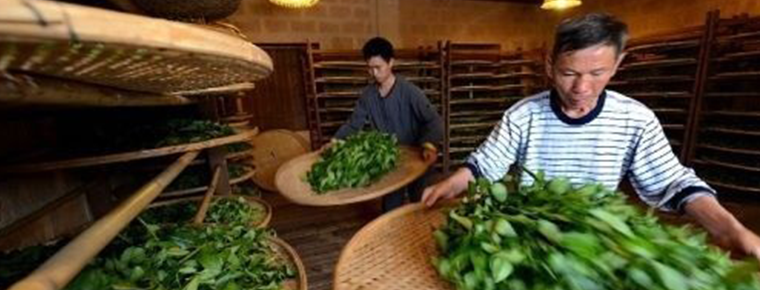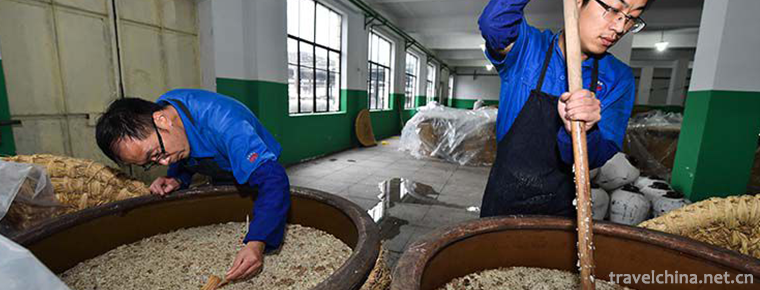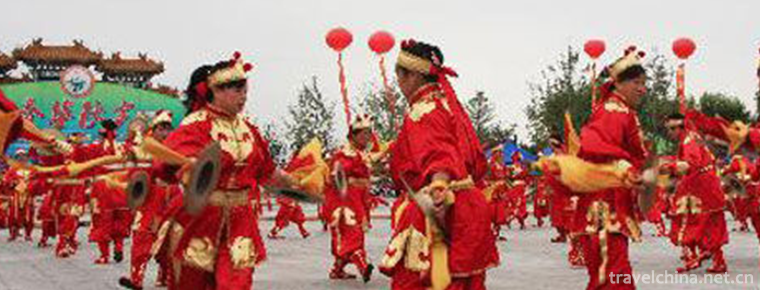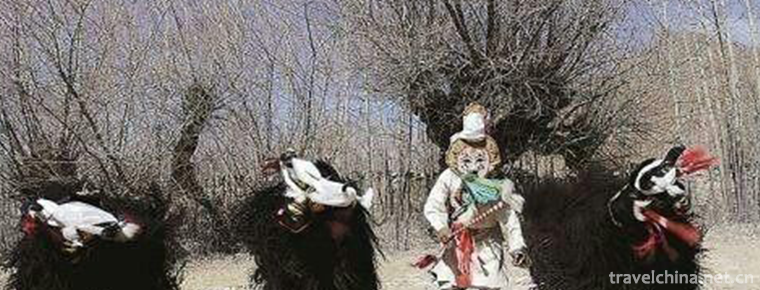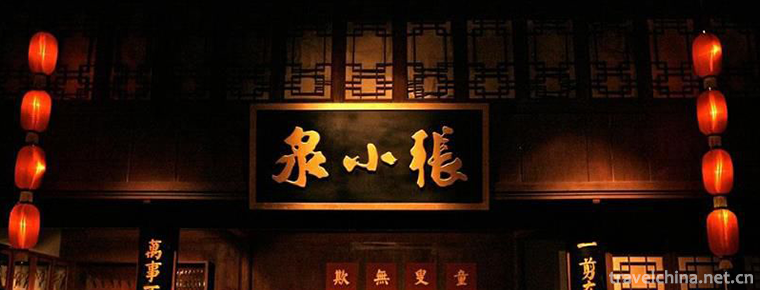Shihuadong National Geological Park
Shihuadong National Geological Park
Beijing Shihuadong National Geopark is located in Cheying Village, Nancheng Town, Hebei Province, Fangshan District, Beijing. It is a seven-storey karst cave 55 kilometers away from Beijing, with a height difference of 150 meters. Now all the first and second floors and the third and fourth floors have been opened to the outside world, and the length of the tour reaches 2500 meters. Shihua Cave, originally known as Qianzhen Cave, has been discovered for more than 500 years. Because there are three marble Buddha statues carved in the cave, they were renamed "Stone Buddha Cave" and incense was very popular for a time. Shihua Cave is a large-scale cave with many cave layers, complete sedimentary types and large amount of secondary chemical sediments found in China. Its aesthetic value and scientific research value can also rank in the forefront of the world's caves. It is also known as China's four major karst caves with the famous Guilin Ludiyan, Fujian Yuhua Cave and Hangzhou Yaolin Cave.
geographical environment
Beijing Shihuadong Geopark is located in the low valley of the middle reaches of the Dashi River Basin in Hebei Town and Fozizhuang Township of Fangshan District, Beijing. It belongs to the middle and low mountain and hilly area. The topography is high in the South and low in the north. The highest peak in the area is 1180 meters above sea level. In addition, there are Sangshuling Mountain, Fenghuang Mountain and Jiaozi Mountain. Their elevations are 838 meters, 735 meters and 544 meters, respectively. The lowest area is located in the eastern area of Wanfotang, with an elevation of 100-150 meters. The topographic fluctuations in the area are large, the valleys are relatively open, and the shape of the valleys is mostly radial distribution. Geomorphological types in this area are typical middle-low mountain tectonic denudation landforms. After long-term weathering denudation and cutting and dissolution of surface water, typical karst landforms are formed in the carbonate subsidence distribution area.
The Shihuadong area is one of the most densely distributed karst caves in China. In December 2000, the Beijing Municipal Government approved the establishment of the Shihuadong Nature Reserve in Beijing, and defined 36.5 square kilometers of the same area as the Shihuadong National Geopark as the nature reserve. This area is a warm temperate semi-humid and semi-arid region, and it is a typical temperate continental monsoon climate. The four seasons are obvious, the spring is dry and windy, the summer is hot and rainy, the autumn is sunny and rainy, and the winter is dry and cold. The temperature in the cave ranges from 11 to 13 degrees centigrade all the year round, with bat habitat and bird-land plankton. In one year, the warm period is 30 days longer than that in the plain area, 28 days shorter than that in the plain area, and only 3 days in the summer period, basically no hot period. There is a small cold period in winter, but no severe cold period and severe cold period. This kind of temperature is suitable for the development of tourism. The annual average precipitation is 650-700 mm, which is 50-100 mm higher than the annual average of the whole city. The spatial and temporal distribution of precipitation is extremely uneven. The precipitation in flood season (June-September) is concentrated, accounting for 85% of the total precipitation in the whole year, and mostly occurs in the form of heavy rain.
Park Area
Shihuadong National Geopark is located in Hebei Town and Fozizhuang Township. The two townships have 18 natural administrative villages under their respective jurisdictions, with a total population of 43,247, of which 31041 are agricultural and 12,206 are resident, accounting for 28% of the total population. The inhabitants in the area are mainly Han and Manchu, and there are garrison troops in the area. Shihuadong Geopark covers 4667 people from 10 villages in two townships.
From Wanfotang to Banbidian to Loess Slope in the east; from Huagang Village to Lijialing in the west; from Loess Slope to Xinzhuang in the north; from Fenghuangshan in the south to Sanding ridge, 12 km in length from east to west, 4 km in width from north to south, covering an area of 36.5 square kilometers. The area of the first-class karst cave burial area is about 12.13 square kilometers, including four areas, from left to right: 1) Jimao cave burial area is 0.95 square kilometers; 2) Yinhu cave-Yingshui cave burial area is 4.81 square kilometers; 3) Shihua cave and Qingfeng cave burial area is 5.4 square kilometers; 4) Kongshui cave burial area is 0.97 square kilometers.
Main attractions
Legend of scenery
Shihua Cave, also known as Qianzhen Cave and Shifo Cave, is located in Nancheying Village, Hebei Town, Fangshan District. It is one of the four famous caves in China. There is a legend about Shihua Cave. A long time ago, a monk named Yuanguang came to Nancheying Village and decided to have a rest when he saw the beautiful scenery here. But he was awakened by the cool air in the hot summer. He subconsciously looked down the wind and saw that the gust of cool wind came from the gap between the rocks on the north side of the ditch. His curiosity drove him to find out. He held the hammer and chiseled the table tennis in the concave and finally chiseled it. Opening a hole with a thick bucket mouth, he climbed far and far through the thin-walled hole. He saw the more and more fluorescence gathered in front of him. Through the fluorescence, he saw the huge cave in front of him decorated with a lot of wonderful and magnificent sceneries in various forms, such as pillars, flowers, umbrellas and spheres. He was intoxicated, so he had a "fairyland cave land, diving into dreams". The poem title of Zhenzang and the three big characters of "Qianzhen Cave" at the entrance of the cave made it easy for him to make this strange cave his home and devote himself to practice. Today, 700 years later, the three bold characters of Qianzhen Cave, beside the Stone Flower Cave inscribed by the contemporary celebrity Mr. Zhao Puchu, still shine in the sunshine.
Shihua Cave is a large-scale cave with many caves, complete sedimentary types and large amount of secondary chemical sediments found in China. The cave body is a multi-storey multi-branched multi-storey structure with seven floors. The length of the first to fifth floors is 5000 meters. The sixth and seventh floors are the flow and water-filling tunnel layers of the underground river. The entrance of the cave is 25L meters above sea level and 160 meters away from the diving surface. It belongs to a cave near the diving surface. The Stone Flower Cave is named for its natural stone flowers. Stone flower has many forms, splendid and huge number, which is the largest cave in China. The overall characteristics of Shihua Cave are multi-layered and multi-branch, with seven layers from top to bottom. Each layer has different landscapes. It is known as "the underground pearl of Beijing". Among them, the "stone lotus flower" formed by moonmilk, consisting of more than 540 pieces of stalactite, 10 meters high, 18 meters long, stone mantle, Shiqi, double-color stone shield, Longgong double pillars and other landscapes are exquisite cave karst landscapes at home and abroad, and are rated as national key scenic spots, national geological parks, national AAAA scenic spots. The main contents of the tour are: the layer of humanistic interest, the layer of exploring wonders and ornaments, the exhibition hall of wonders and stones, etc.
Shihua Cave has developed one, two and three-storey tunnels with a total length of 1,900 meters. The first and second-storey tunnels open to tourists are 1,362 meters long, consisting of twelve tall caverns and sixteen caverns. There are sixty-three branches with different shapes and sizes. There are many kinds of secondary chemical sediments in Shihua Cave, with beautiful shapes, such as various kinds of stone flowers, branches and stalactites; elegant and beautiful stone pagodas, shields, lamps and terraces; magnificent stone mantles, flags and waterfalls; silver and white dazzling moonstones and glittering colorful walls. Shihua Cave gathers the essence of karst cave deposits. The Shihua Cave not only has many sedimentary types and beautiful shape, but also has a solid cave body with distinct layers, fresh air and good environment. Because of the large space and underground rivers in the deep part of the cave body, the advantages of self-cycling regulation of the climate and environment of the cave are formed.
Shihua Cave's "Yaochi Shilian" has been growing for more than 32,000 years. It is white and plump. It is deposited by large monthly rocks. It is rare in the world. China has discovered for the first time that the "Yellow River Waterfall" is formed by a huge stalactite with a height of 12 meters and a width of 23 meters. It is magnificent and magnificent: "Dragon Palace Harp" with a height of 10 meters and a length of 18 meters. It is folded and distributed by more than 540 pieces of stone mantle, which can be regarded as the first mantle of caves in China. "Silver flag rolls over", "flashing wall", "three pillars in the cave sky", "fairy tent in the back palace" and other twelve cave wonders are all amazing. In order to meet the needs of tourists, while strengthening the deep development, Shihua Cave has added "World Cave Miracle Exhibition" at the outlet of the cave, collecting and exhibiting hundreds of world famous cave landscape photos.
Silver Fox Cave (also known as Sanying Cave) is located 100 meters south of Yingshui Village, Fozizhuang Country, Fangshan District, 68 kilometers away from Beijing City, with convenient transportation. The cave was discovered and developed on July 15, 1991. The Silver Fox Cave is a single transverse shape, with a depth of more than 90 meters and a total length of about 4000 meters. It has opened 2,000 meters of dry cave and 800 meters of water cave. There are 8 tall halls and more than 40 scenic spots in the cave and the flow cave section of underground river. The width of the cave is generally 5-10 meters. The average height of the cave is 8 meters and the area of the cave is about 30,000 square meters.
The Silver Fox Cave is another wonder in the Shihua Cave area. The scenery changes step by step in the cave, which makes people unable to catch their eyes. In particular, there is a national treasure stone, about two meters long, snow leopard head, face and body of silver fox, like a "silver fox hanging upside down", it emerges through the body about two inches long white as snow burrs, densely like velvet crystal clear, silver-white dazzling, beautiful and moving. In addition, there are tall stalagmites, pillars, typical flags, stone belts, crystal goose tubes, glittering waterfalls, white and flawless pillars, stone hairs, stone flowers and so on. Silver Fox Cave is a single cave, but its deposited micro-landscape is rich and colorful, with its own characteristics, plus nearly 800 meters long water cave, clear water, clear underground river.
The distribution density of karst caves in Shihua Cave area is high, the cave forming conditions are good, and the formation process is complex. These lofty halls and beautiful landscapes are carefully sculpted by nature in the long geological years.
Shihua Cave is composed of multi-layer karst caves. The cave roof of this multi-layer structure was first formed. At that time, the top layer of the cave was equivalent to the level of the groundwater level, where groundwater was dissolved and transported to take away the material of the cave. After the cave was formed, the crust rose, and the groundwater level of the cave increased with the increase of the crust, while the groundwater level declined relatively. Later, when the crust stabilized, the groundwater was transported by the dissolution in the new rock layer, and a second layer of karst cave was formed. In this way, the earth's crust has risen many times, forming multi-layered caves. It can be seen that the existence of seven-layer karst caves with different heights in Shihua Cave indicates that there have been at least six intermittent rises in this area. Today, groundwater is still dissolving the lowest caves.
The natural scenery in Shihua Cave is exquisite and exquisite. There are tall and white stalagmites, pillars and terraces formed by dripping water, running water and stagnant water deposition, and numerous crystal flowers, stone feathers, chrysanthemums, stone pearls and grapes formed by permeable water, splashing water and capillary water deposition. There are glittering goose tubes, Pearl towers, colorful walls and so on. Many colorful stone flags and beautiful stone shields are typical of cave sediments in China, and a large number of moonmilk lotus flowers are first found in caves in China.
In addition to the underground karst caves and the secondary chemical depositional landscapes in the caves, the overground part of Shihuadong National Geological Park in Shibei includes geological relics landscapes such as stratigraphic profiles and geological structural traces, as well as some ancient buildings and human historical landscapes.
The environment in Shihua Cave is elegant and the air is fresh. The temperature in the cave is 13 degrees every year. The distribution density of karst caves in Shihua Cave area is high, the cave forming conditions are good, and the formation process is complex. These lofty halls and beautiful landscapes are carefully sculpted by nature in the long geological years. Shihua Cave is composed of multi-layer karst caves. The cave roof of this multi-layer structure was first formed. At that time, the top layer of the cave was equivalent to the level of the groundwater level, where groundwater was dissolved and transported to take away the material of the cave. After the cave was formed, the crust rose, and the groundwater level of the cave increased with the increase of the crust, while the groundwater level declined relatively. Later, when the crust stabilized, the groundwater was transported by the dissolution in the new rock layer, and a second layer of karst cave was formed. In this way, the earth's crust has risen many times, forming multi-layered caves. It can be seen that the existence of seven-layer karst caves with different heights in Shihua Cave indicates that there have been at least six intermittent rises in this area. At present, groundwater is still dissolving the lowest caves. In addition to underground karst caves and secondary chemical depositional landscapes in the caves, the above ground part of Beijing Shihuadong National Geological Park includes geological relic landscapes such as stratigraphic profiles and geological structural traces, as well as some ancient buildings and human historical landscapes.
Tourism information
Ticket Price
Adult tickets are 70 yuan, students hold student certificates, elderly people hold half-tickets, children under 1.2 meters are exempt from tickets.
Traffic routes
bus line
No. 833, Liangxiang Road, Fangshan - --------- Shihuadong Special Line (regular work, only a few fixed shifts a day);
No. 833 Road, Liangxiang, Fangshan - ------- Hebei Zhuang (Shihua Dongdaokou Station, get off and take a taxi to the scenic spot)
Fangshan 43 Road, Fangshan Liangxiang, Fangshan - ------- Shihuadong Branch Line (regular shift, long interval, about one hour or so)
Self-driving line:
1. Exit of Fangshan (Yancun) on Beijing-Shijiazhuang Expressway - - Yanhe Road (Tuoli) - - Shihua Cave
2. Exit of Fangshan Liangxiang Airport on Beijing-Shijiazhuang Expressway - Liangtuo Road (via Qinglong Lake) - - Shihua Cave
Front tips
1. The perennial constant temperature in Shihua Cave ranges from 11 to 13 degrees Celsius. Attention should be paid to bringing a coat in summer so as not to catch cold.
2. Drinking water should be prepared before entering the cave. It is easy to thirst when climbing the cave.
3. Because the tour time is not long, it can be arranged as a half-day tour or a one-day tour. It can also be combined with other scenic spots such as Tanzhi Temple or Ape Man Site in Zhoukoudian.








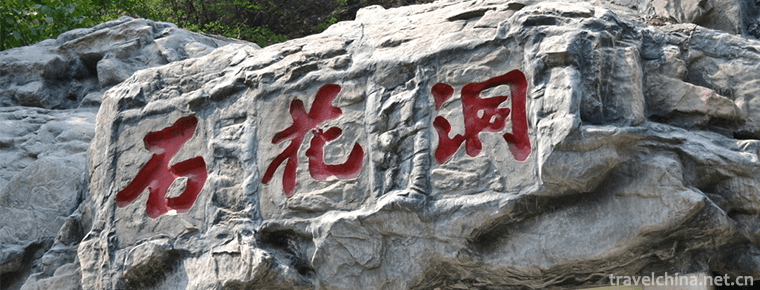
-
Yanoda Tropical Rainforest Scenic Area
Yanuoda Tropical Rainforest Scenic Area is the only tropical rainforest located at 18 degrees north latitude in China. It is the concentration of five tropical rainforests in Hainan Island.
Views: 121 Time 2018-12-12 -
Nanshan Bamboo Sea Scenic Area
Tianmu Hunan Shanzhuhai Scenic Area is located in Liyang, Jiangsu Province, which is the junction of Jiangsu and Anhui Provinces. It is a national 5A scenic spot..
Views: 202 Time 2018-12-31 -
Hu Qingyutangs Traditional Chinese Medicine Culture
Hu Qingyutang's traditional Chinese medicine culture is one of the national intangible cultural heritages and the traditional trade customs preserved by Hu Qingyutang..
Views: 142 Time 2019-05-03 -
Production Techniques of Flower Tea
Jasmine tea, also known as jasmine fragrance, is the tea and jasmine flowers to blend, bass, so that tea leaves absorb flower fragrance into tea, tea fragrance and jasmine fragrance interactively inte.
Views: 172 Time 2019-05-04 -
Mongolian Sihu Music
Mongolian Sihu music is one of China's intangible cultural heritage. Mongolian Sihu is one of the most distinctive Mongolian musical instruments, stringed instruments..
Views: 171 Time 2019-06-04 -
Miao New Year
Miao year, the first year of the Miao calendar, is the most solemn traditional festival of the Miao people. The time spent in different areas varies from September to the first month of the lunar cale.
Views: 93 Time 2019-06-05 -
Wood Engraving Picture
In Chinese folklore, New Year's pictures are the symbol of the New Year. If they are not pasted, they will not be counted as the New Year's Day. New Year pictures are not only decorations for festival.
Views: 385 Time 2019-06-05 -
Brewing Techniques of Shaoxing Yellow Rice Wine
Shaoxing has a long history of brewing wine, which can be traced back to the Spring and Autumn Period and the Warring States Period. By the time of the Northern and Southern Dynasties, it was well-kno.
Views: 161 Time 2019-06-14 -
Prince Wuwuwu quarrel
Prince Wujiaozi is one of the unique traditional folk dances in Beijing. It integrates entertainment, fitness and performance. Wujiaozi has a strong style, rough style, relaxation and generosity. Part.
Views: 130 Time 2019-06-18 -
Xie Rong Zhongzi
Xierong Zhongzi still keeps the primitive and simple legacy, from which we can see the spiritual sustenance and aesthetic pursuit of Tibetan ancestors. This kind of primitive culture and art has becom.
Views: 180 Time 2019-07-06 -
Forging Skill of Zhang Xiaoquans Scissors
In 1663, Zhang Xiaoquan's scissors were first created in Hangzhou, and later became one of the famous "five Hangzhou" products. The development of "Zhang Xiaoquan" scissors has exp.
Views: 278 Time 2019-07-25 -
Yibin medical and health
By the end of 2019, there are 5120 medical and health institutions in Yibin City, including 135 hospitals (102 private hospitals); 4945 primary medical and health institutions, including 177 township health centers, 46 community health service centers (stations),.
Views: 333 Time 2020-12-18
